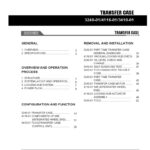The acronym BYOE, while seemingly esoteric, has permeated various technological and organizational landscapes. It represents a significant paradigm shift in how individuals and institutions approach resource utilization and technological integration. To truly understand its import, a deep dive into its constituent parts and contextual applications is necessary.
At its core, BYOE stands for Bring Your Own Everything. This encompasses a broader philosophy than the commonly understood BYOD (Bring Your Own Device). BYOD, a concept familiar in modern workplaces, focuses primarily on employees utilizing their personal devices, such as smartphones, laptops, and tablets, for work-related tasks. BYOE, however, extends this principle far beyond mere hardware.
BYOE: Beyond Devices
The “Everything” in BYOE suggests a more encompassing integration of personal resources into a designated environment, often, but not always, a professional one. This can include, but is not limited to:
- Software Applications: Employees or individuals can leverage their personally licensed or preferred software for organizational tasks. This reduces the burden on the institution to provide universally applicable software solutions, particularly for specialized roles or niche requirements.
- Cloud Storage and Services: Utilizing personal cloud storage accounts (e.g., Dropbox, Google Drive) and other cloud-based services for data storage, collaboration, and project management. This leverages the scalability and accessibility of cloud infrastructure while potentially reducing institutional infrastructure costs.
- Network Connections: In certain contexts, individuals might utilize their personal internet connections or virtual private networks (VPNs) to access organizational resources, especially when secure or dedicated connections are not readily available.
- Skills and Expertise: Though not explicitly tangible, the skills, knowledge, and professional networks that an individual brings to an organization can be considered a form of “everything.” BYOE recognizes and leverages these pre-existing assets.
- Data & Information: Using personal data management platforms or personal research to inform business operations.
The Allure of BYOE: Advantages and Opportunities
The adoption of a BYOE strategy offers a panoply of potential advantages for both individuals and organizations. Let us investigate.
- Cost Reduction: This is perhaps the most immediately discernible benefit. By leveraging individual resources, organizations can significantly reduce capital expenditure on hardware, software licenses, and IT infrastructure. The onus of maintenance and upgrades often shifts to the individual user.
- Increased Productivity: Individuals tend to be more proficient and comfortable using tools and platforms they are already familiar with. This can lead to a boost in productivity and efficiency, as the learning curve associated with new, unfamiliar systems is minimized. The comfortability alone creates an increased work velocity.
- Enhanced Flexibility and Agility: BYOE enables greater flexibility and agility, allowing individuals to adapt to changing project requirements and work environments more readily. This is particularly advantageous in dynamic industries where rapid adaptation is crucial.
- Employee Empowerment: By allowing individuals to choose the tools and resources they prefer, BYOE fosters a sense of ownership and empowerment. This can lead to increased job satisfaction and a more engaged workforce.
- Access to Specialized Resources: BYOE allows organizations to tap into a wider range of specialized resources and expertise that may not be readily available internally. For instance, a consultant might utilize their proprietary data analytics platform for a specific project.
Navigating the Labyrinth: Challenges and Considerations
While the benefits of BYOE are compelling, it is imperative to acknowledge the inherent challenges and potential pitfalls associated with its implementation. These need careful consideration and mitigation strategies.
- Security Concerns: The use of personal devices and resources introduces significant security risks. Organizations must implement robust security protocols to protect sensitive data from unauthorized access, malware infections, and data breaches. Data loss prevention (DLP) strategies become paramount.
- Compatibility Issues: Ensuring compatibility between diverse personal devices, operating systems, and software applications can be a logistical nightmare. Standardized protocols and guidelines are essential to minimize compatibility issues and ensure seamless integration.
- Data Governance and Compliance: Maintaining data governance and regulatory compliance when using personal resources can be challenging. Organizations must establish clear policies regarding data ownership, access, storage, and disposal to avoid legal and ethical complications.
- Technical Support: Providing technical support for a wide range of personal devices and software applications can strain IT resources. Organizations may need to establish clear boundaries regarding the scope of IT support for BYOE users.
- Equity and Access: BYOE can exacerbate existing inequalities if some individuals lack access to the necessary resources or technology. Organizations must ensure that all employees have equal opportunities to participate in BYOE programs and provide support where needed.
Strategic Implementation: A Roadmap for Success
The successful implementation of a BYOE strategy requires a well-defined roadmap that addresses the aforementioned challenges and maximizes the potential benefits. Key considerations include:
- Develop a Comprehensive BYOE Policy: This policy should clearly outline the permissible use of personal resources, security protocols, data governance guidelines, and IT support parameters.
- Implement Robust Security Measures: Deploy multi-factor authentication, encryption, data loss prevention (DLP) tools, and mobile device management (MDM) solutions to protect sensitive data.
- Provide Training and Awareness Programs: Educate employees on security best practices, data governance policies, and potential risks associated with BYOE.
- Establish Clear IT Support Guidelines: Define the scope of IT support for personal devices and software applications, and provide resources for self-service troubleshooting.
- Monitor and Evaluate the BYOE Program: Continuously monitor the effectiveness of the BYOE program and make adjustments as needed to optimize performance and mitigate risks.
In conclusion, BYOE represents a profound shift in the way we think about resource utilization and technological integration. While the potential benefits are substantial, organizations must carefully weigh the challenges and implement appropriate safeguards to ensure a secure, equitable, and productive BYOE environment. The future of work will undoubtedly be shaped by this evolving paradigm.









Leave a Comment